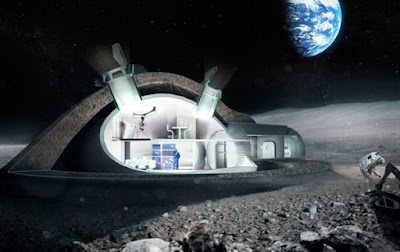 |
APOLLO 11
Results from the Apollo 11 mission established key paradigms of lunar and planetary science. After a harrowing descent to the surface, Armstrong set the Eagle down on the cratered basaltic plains of Mare Tranquillitatis. Extravehicular activity was brief—just two and a half hours during that first mission—and included setting up surface experiments and exploring a small cluster of craters near the lunar module and Little West Crater some 60 meters away, as shown in figure 1. Aldrin’s iconic Apollo 11 bootprint photo revealed much about the lunar soil, including its fine-grained nature, its cohesiveness, and its ability to pack tightly together. |
Topics: Apollo, Moon, NASA, Spaceflight
On 20 July 1969, Apollo 11 astronauts Neil Armstrong and Edwin “Buzz” Aldrin landed on the Moon while Michael Collins orbited in the command module Columbia. “Tranquility Base here. The Eagle has landed”became one of the most iconic statements of the Apollo experience and set the stage for five additional Apollo landings.
Each of the Apollo missions explored carefully selected landing sites and conducted a variety of experiments to probe the lunar interior and measure the solar wind. Well-trained astronauts made geologic observations and collected samples of rock and regolith, the impact-generated layer of debris that composes the lunar surface. Over a half century of study, the samples have revealed abundant information not only about the Moon’s origin and history but also about the workings of our solar system.
APOLLO 11
Results from the Apollo 11 mission established key paradigms of lunar and planetary science. After a harrowing descent to the surface, Armstrong set the Eagle down on the cratered basaltic plains of Mare Tranquillitatis. Extravehicular activity was brief—just two and a half hours during that first mission—and included setting up surface experiments and exploring a small cluster of craters near the lunar module and Little West Crater some 60 meters away, as shown in figure 1. Aldrin’s iconic Apollo 11 boot print photo revealed much about the lunar soil, including its fine-grained nature, its cohesiveness, and its ability to pack tightly together.
The scientific legacy of the Apollo program, Brad Jolliff, Mark Robinson, Physics Today





